Advisory or homeroom is a perfect place to build relationships with your students in a non-academic setting! It can also be the time that turns into chaos because you don’t have a plan for it.
Homeroom is often the last thing I think about, but I have found that my school day and school year is so much more successful when I have taken the time to make the most of my homeroom. Whether your homeroom is 30 minutes or 15 minutes, here are a couple of ideas.
Read until the end to find out what I did on each day of the week and get free homeroom slides.
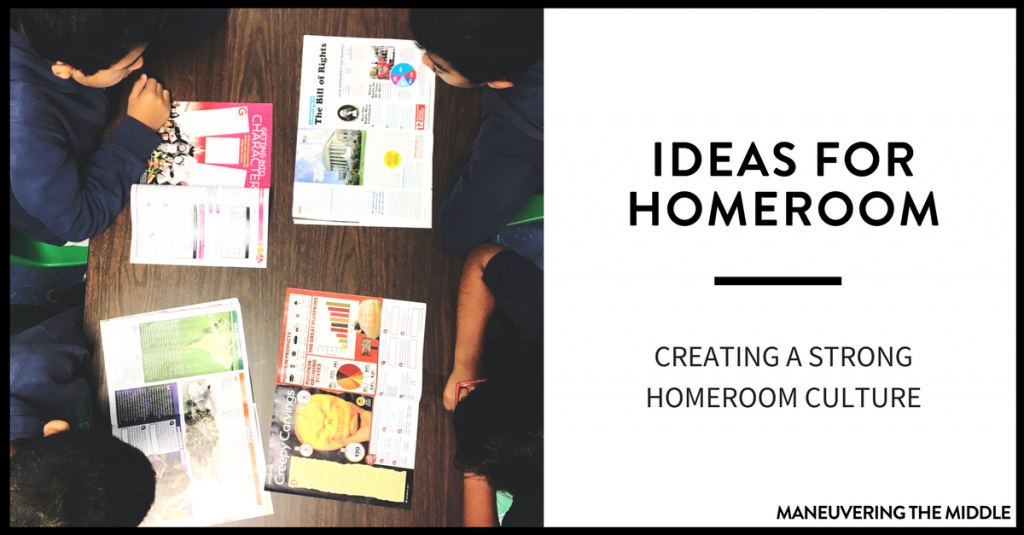
1. Drop Everything and Read (D.E.A.R.)
This is my favorite one by far! On days where you are having to pass out papers from the front office or you are needing to collect and track the variety of permission slips that never end, students reading silently makes your job so much easier. I like to keep Scholastic Magazines available for students to grab and read because they are super engaging, even for your most reluctant reader. Incredible graphics, interesting stories, and real-world connections are just a few of the benefits. You can find out more about what’s included here.
2. Character Building/Community Circles
I use community circles to build community and character amongst the students in my advisory. We decide on norms for how we have discussions (this is key) and then I ask a question that we go around in a circle and answer. The questions can be super light-hearted (if you had a superpower, what would it be and why?) or a little deeper (what is the biggest challenge that you are facing?). You have to gauge the maturity of your students, but it does help you know your students better and for them to know you better.
3. GPA and College Preparation
To invest students in their grades, I talk about what grade point average means and what is required to get into various universities. Because I live in Austin, many students want to go to the University of Texas, which requires a GPA of 3.75. After I teach decimal operations, every Wednesday students receive a progress report, and they calculate their GPA. To make it even more impactful, I have a list of colleges and their respective GPA requirements on the tracker. Their middle school GPA might not count towards college, but there is no time like the present to invest students in their learning and grades.
4. Missing Assignments
Homeroom is a great time for students to work on missing assignments! After students receive their progress reports, students with missing assignments can spend this time making up their work. Ideally, this is best for assignments that can be submitted digitally.
5. Student Helpers
Designate some “teachers’ aids” who have a dedicated job that they are capable of doing on their own. This could be updating student work bulletin boards, feeding a class pet, double checking attendance, writing the objective on the board, or a variety of other things. You can read more about student jobs here.
6. College Pride/Shout Outs
My school’s homerooms are all named after the college the homeroom teacher attended. I went to Texas A&M University, so I refer to my students as A&M. I have a wall of A&M memorabilia, including a flag. Fridays are Flag Friday. I award a student who has shown the values of A&M that week by highlighting a specific action that I saw. The student is awarded with the school flag and they get to wear the flag as a cape for the rest of the class. My students love it and are super invested! Every Friday, they ask “Who is wearing the flag?” as soon as they walk in the door.
7. CNN10
CNN10 is a kid-friendly, 10 minute news program that covers current events. There is a new episode each day which makes it a reliable option for homeroom. You can have students jot down a summary or put it on for students to watch as they are eating breakfast.
8. Homeroom Slides
These homeroom slides are a perfect way to start off your time in Advisory! Make your daily announcements, find out how your students are feeling, and share some inspiration – all great ways to start your students’ days!
Grab these free Homeroom Slides!

This list is not exclusive, but they are things that I do regularly in my homeroom. In an ideal week, I do a wide variety of the items above. Paperwork is usually passed out on Mondays, D.E.A.R. happens the day I collect paperwork so it varies, GPA is tracked on Wednesdays, Thursday is reserved for community circles, and Friday is for building college pride through Flag Friday. It is a flexible schedule that changes based on what we have going on that week. What are the ways that you use your homeroom?
Maneuvering the Middle has been publishing blog posts for nearly a decade. This post was originally posted in November 2017; it has been updated for relevancy.
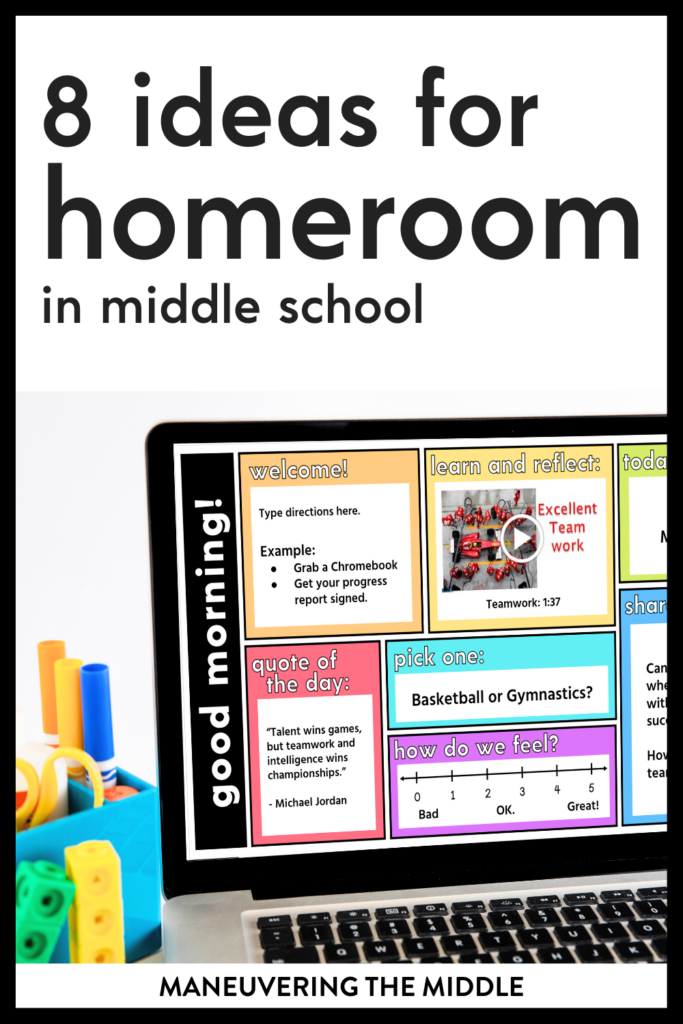
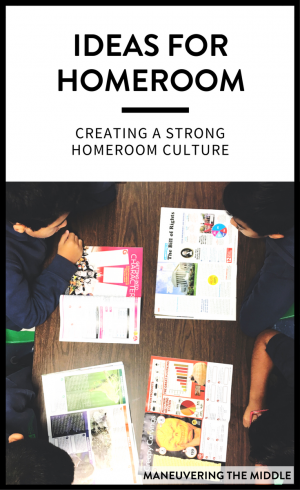
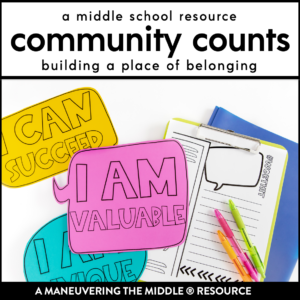
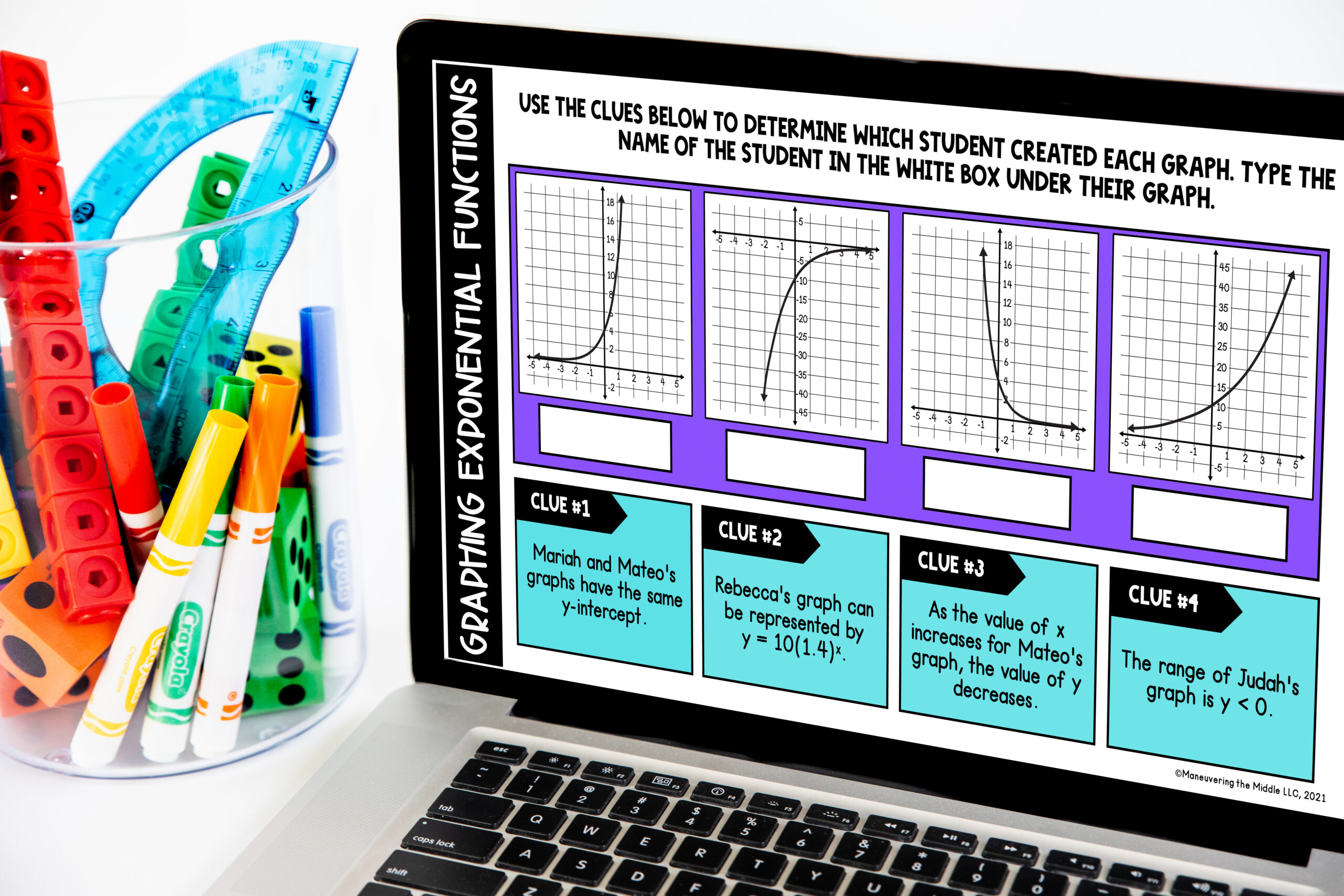
I’m only in my second year teaching and I would love to implement community circles with my class I have for SSR every day. Did you do a lot to prepare the kids at first? Or did you simply have them share and brainstorm norms and then start with a few questions? I’d love to know how structured you made it. I’ve looked up restorative community circles and many people emphasize that it requires lengthy initial process that just seems too much of a hassle.
I was just curious to see how you set up norms and structured it. Thank you! I love your blog and all of the posts on organization. The weekly worksheet is a life saver.
Hi Emily! That is a great question! We will add that to our ideas for blog post, as it can easily be incorporated in a classroom. Thanks!